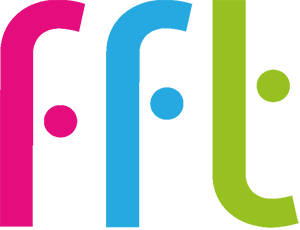How is data used in schools today?
A 2019 survey of current practice
How frequently do senior leaders request assessment data? What type of data do they receive? How are targets and flightpaths created? When do schools talk to students about future attainment?
You might be surprised how little we actually know about data use in schools today. So, with the help of Teacher Tapp, we’ve surveyed over 3,000 staff in schools. The results, as you might expect, are fascinating. We’ve included a few key insights here but you’ll find far more detail in our new report – ‘How is data used in schools today? A 2019 survey of current practice’.
Take a look and then download the report.
1
in
5
Listen
Vote
Our report focuses on the data and information that is collated centrally in schools, and shared between teachers, senior leadership and parents. We started by asking how frequently the process of collating attainment data happens.
Teachers are currently asked by senior management for attainment information either every half term or every term in both primary and secondary schools.
Listen
How frequently are you asked to provide any data on pupils to your senior management team (or how frequently do you receive it if you are SLT)?

Think about the last pupil attainment data you provided to SLT or submitted to a data tracking system. Was this data created from...?

The type of attainment data used across phases is quite different. Primary teachers are either using their own judgement of attainment, perhaps supplemented by reviewing books, or they are using a purchased standardised test. Secondary departments are most frequently depositing data from a subject test, co-ordinated across school department.
It is perhaps not surprising that the majority of secondary schools simply use KS2 results to create target grades, since Progress 8 means these targets will ultimately be how they will be held to account.
Primary schools seem to be less tied to Key Stage prior attainment data in the setting of KS2 SATs predictions or targets.
Listen
If you do talk to parents and students about what they are likely to attain in their Key Stage 2 SATs, what information do you draw on to inform this prediction?
The majority of teachers would rather GCSE predictions were given to students much later than is current practice. For example, just one-in-ten teachers feel predicted grades should be given to Year 7 or 8 students, compared to 43% reporting it as current practice. Almost 4-in-10 teachers would prefer this information was given later than the start of Year 10 or never at all.
Primary school discussions about likely SATs performance come much later, on average, which is logical since they have no implications for student transitions. There is little difference in the timing of this conversation by school demographic profile or inspection rating.
In your opinion, at what age should parents and students first be given some indication of how well they are likely to perform in their Key Stage 2 SATs assessments?
While teachers clearly value assessment data, 41% of teachers feel their school is collecting more data than they are regularly able to make use of. By contrast, just 9% of teachers feel their school should collect more data.
Listen
Assistant Head Jon Waite, from Seaford Head school, talks about acting as a 'filter' for data:
Think about all the assessment data and other information you collate about pupils and use within your school. Do you feel that you have…

The big picture
Our panel of teachers is reasonably positive about the way that data is used in their school – just 30% disagree that it is used in a constructive way to improve education outcomes.
By staff: School performance data is used in a positive, supportive and constructive way within my school to improve education outcomes

A detailed breakdown
However, classroom teachers are far less positive than those in positions of responsibility. It is secondary classroom teachers that are most negative about its use.
By role: School performance data is used in a positive, supportive and constructive way within my school to improve education outcomes

It’s time to read the full report
Want to see the bigger picture?
If you’ve made it this far then you’ll want to understand the bigger picture. Download the full report - ‘How is data used in schools today? A 2019 survey of current practice’.
We hope that you find the report as fascinating as we do. More importantly, we hope that you will use the report to think about data use in your own school and how it can have a positive impact on pupils, parents and teachers.
Let’s talk
If you’d like to know more about this report or any of the other work we do then please do get in touch.










